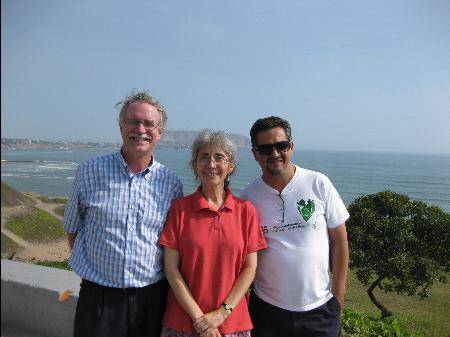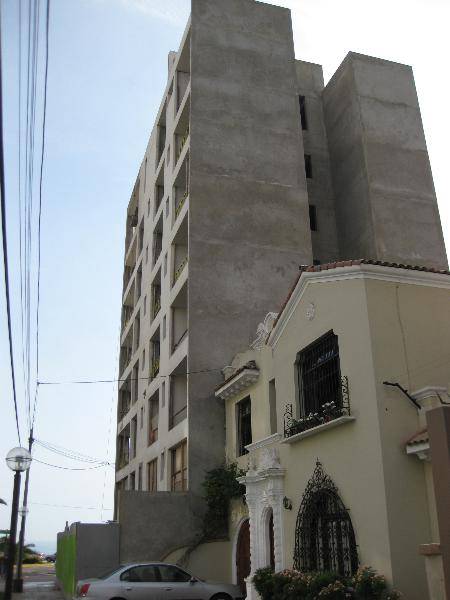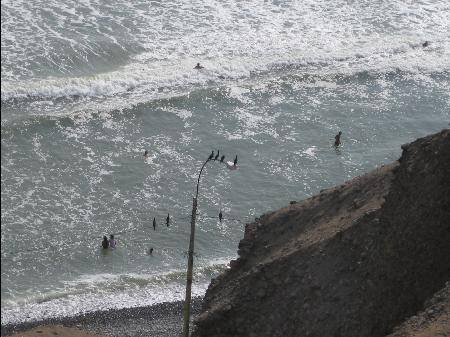Well, here I am again – back in South America and back on the hunt for Solanaceae. This time the trip will focus on tomato and potato wild relatives for the Museum’s Natural Resources Initiative - we will be collecting the plants and their associated insects to look at patterns of distribution through a variety of lenses. I have joined Tiina Särkinen from the Royal Botanic Garden Edinburgh for a week of work in the herbarium on our massive checklist of Peruvian Solanum species before the rest of the Museum team arrives. I’ll be joined this time by
- Mindy Syfert, who began to work with the team in September, but hasn't been in the field yet!
- Erica McAlister (aka FlyGirl), who has been here before...
- Dan Whitmore, another newbie to the team and to Peru.. he also does flies...
Our aim is the mountains of Central Peru; we will be accompanied by Paul Gonzales (who you might remember from the 2012 southern Peru trip…) whose bachelor’s thesis was done in our first target area, so we are in good hands!
Our aim for this field work is to collect all the insects associated with individual Solanaceae plants (concentrating on the wild relatives of tomatoes and potatoes) – this will give us a data set that can be sliced in many ways – by geography for example, are the insects the same in any given area? Or do they differ between species in a locality? Is locality more important than host plant?
Or maybe the evolutionary relatedness of the plants influences the insect community – are close relatives hosting similar insect communities? I am sure you can think of more questions, as I am sure we will once in the field.
Meanwhile, however, I am in Lima with Tiina, working hard in the herbarium on compiling an updated list of all the Solanum species that occur in Peru. Yesterday I went through all the unidentified specimens and thankfully managed to identify many if not most, so we are getting there! Tomorrow we start at opposite ends of the alphabet and work through the list to the middle, checking distributions against the collections in the herbarium to be sure we have not missed anything. Oh, and we will certainly be writing a few new species descriptions and making some decisions about what to call the new species we have found… more about that tomorrow.
Today though is Sunday and a day for visiting old friends. It is autumn in Lima and the sun is out and skies are clear, so after a great lunch with my old friends Blanca León and Ken Young of the University of Texas who live in Peru part-time (Ken is on sabbatical now and is fortunate to be living here full time for the moment!) and Asunción Cano of the Floristics section of the Peruvian national herbarium, a walk on the cliffs over the Pacific seemed a good idea.
Ken, Blanca and Asuncion on the cliff tops with the blue Pacific behind!
This area is called Miraflores and is growing fast – particularly with high rise apartment buildings. A few old houses remain though, nestled amongst the towers...
The land is so valuable that few old houses remain - the tower block on the left is unfinished - the contractor ran out of money... Sometimes the owners of these lovely old houses sell and then get a flat in the new block.
The cliffs down to the Pacific from this part of Lima are precipitous; at the bottom is a shingle “beach” – but the sea is full of people, all beginning surfers learning to ride the beautiful long waves that crash on this shore. When I lived in Peru many years ago, this seafront was not a very salubrious place to be, but it is now totally transformed – a cliff-top park full of families and people out strolling in the sunshine. What better way to pass a Sunday afternoon!
Lots of surfers in the sea, a shingle beach and cormorants on a lamp post - I could be in England but for the blue of the sea and the warmth of the sun...





